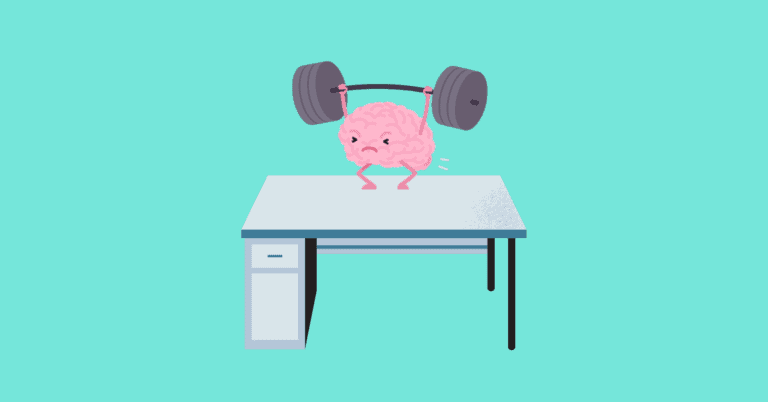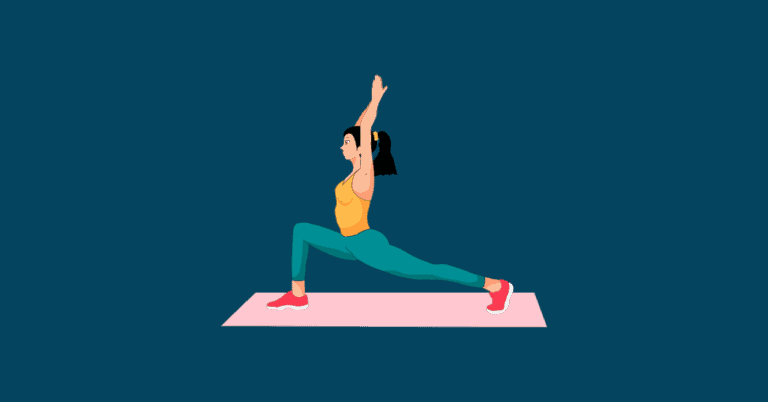Treadmill VS Exercise Bike: Which Is Better For You?
So, treadmill or exercise bike?
Great question.
First off, either is better than no exercise.
Each has its own set of pros and cons, which this article expands on.
Let’s dive in!
Comparing and Contrasting Treadmill VS Exercise Bike
Type of exercise
Both treadmills and exercise bikes are cardiovascular exercise equipment.
Whether you are walking or running on the treadmill, or going slow vs fast on the exercise bike, the primary aim remains consistent: to increase heart rate and enhance cardiovascular fitness.
That said, they both have the capability to offer a muscular endurance workout too, especially if you are walking on an incline treadmill or cycling at a higher resistance.
Biking is always going to be a low impact exercise, and since it is generally seated – it would be considered a more low impact cardio workout than walking on a treadmill because it would require less weight bearing through the joints. On the other hand, a treadmill can offer low impact exercise (walking) and high impact exercise (jogging or running). Just to clarify “low impact” does not mean low intensity, rather, it refers to exercises that minimize stress on the joints.
So both a treadmill and exercise bike have the capability to offer low to high intensity workouts, depending on how hard you are pushing yourself.
Muscles worked
Both walking on a treadmill and using an exercise bike are lower body-powered exercises and they use similar muscles but to a different degree. The extent of muscle activation differs from person to person.
Overall the muscles worked with walking on a treadmill and cycling on an exercise bike are quadriceps, hamstrings, glutes, calves, and dorsiflexors (muscles in front of leg). The core and back muscles serve as stabilization muscles to keep your trunk upright and stabilize the upper body while the lower body is in motion. Since some exercise bikes, like recumbent bikes, some with back support, it is likely that trunk muscles are engaged to a greater extent during fully upright activities such as walking.
In this study that looked at comparing treadmill walking, upright bike, recumbent bike, and elliptical, participants were randomly assigned to one of these exercise machines, and muscle activation was measured. To keep some consistently among exercise variables, the participants were instructed to exercise at 40-50% of heart rate reserve (which was tracked by the researchers). Heart rate reserve (HRR) is a measure used to gauge the intensity of aerobic exercise relative to an individual’s maximum heart rate (MHR).
Overall, they found that walking on a treadmill lead to more muscle activity in the tibialis anterior (a dorsiflexor muscle), while upright cycling lead to greater muscular activity in the gastrocnemius…..AND there were no significant differences found in muscle activity among other muscles such as the glutes, biceps femoris (a hamstring muscle), rectus femoris (a quad muscle), and lumbar erector spinae (group of back extensor muscles)1.
It’s important to note that this doesn’t imply that one exercise is inherently superior to the other. These results are specific to the participants in the study and do not apply universally across all individuals. Muscle activation patterns can vary significantly from person to person due to factors such as individual biomechanics and exercise technique.
Ultimately, the key takeaway is that both treadmill walking and upright cycling offer effective ways to engage lower body muscles.
Still as mentioned previously, treadmill and stationary bike are both cardio/muscular endurance exercises, not necessarily strength training. So while both can activate and challenge the muscles discussed above, they are not going to offer as much strengthening benefits as traditional resistance exercises.
Bone health
Weight-bearing activities play a crucial role in maintaining and improving bone health by stimulating bone growth and density. In this context, treadmills offer an advantage as they allow for more weight bearing exercise compared to exercise bikes. The impact and gravitational forces experienced during treadmill walking or running can help promote bone health by placing stress on the bones, which stimulates bone remodeling and growth.
Incorporating weight-bearing exercises, whether on a treadmill or through other activities, into a well-rounded fitness routine can contribute to overall bone health. As always, it is important to consult health professionals if you have particular concerns or conditions.
Athletic endeavors
Considering athletic endeavors, it makes sense to align your choice of exercise equipment with the specific event you’re training for. For instance, if you’re gearing up for a 5K run, opting for the treadmill would be a strategic choice. Similarly, if your aim is to excel in a bike race, incorporating an exercise bike into your training routine would be the optimal way to go.
Gradual Progression
In the broader context of fitness, both treadmills and exercise bikes offer settings that allow you to adjust your workout intensity as you advance along your fitness journey. This also allows you to do interval-style training (such as HIIT training), where you alternate periods of high-intensity exercise with periods of lower-intensity recovery or rest, on both equipment.
Endurance Challenge
Both treadmill and exercise bike can allow you to get in a workout that challenges muscular endurance. Muscular endurance refers to the ability of a muscle or group of muscles to sustain contractions or repeat a specific movement over an extended period. You know you are working your muscular endurance when you feel that “burn” in your muscles.
On a treadmill, you can increase the endurance challenge by walking on incline settings, while on an exercise bike, you can elevate the lower body endurance challenge by adjusting the resistance level of your pedaling. In both cases, walking or cycling at higher speeds is going to increase the muscular endurance challenge.
For weight loss
In comparing the treadmill to the exercise bike for weight loss, it’s important to note that while a treadmill may potentially burn more calories than biking, numerous studies emphasize a crucial aspect of long-term weight loss and maintenance—consistency2,5.
While treadmill workouts might offer a higher calorie burn due to their weight-bearing nature and potential for higher intensity workouts like running, the sustainability of your exercise routine is paramount. If you find the treadmill more enjoyable or easier to incorporate into your daily routine, then it may be the better option for long-term weight loss success.
On the other hand, if you prefer an exercise bike or find it easier to maintain consistent workouts on the bike, then it could be the optimal choice for your weight loss journey.
In the end, the key to effective weight loss and maintenance lies in finding an exercise routine that you enjoy and can commit to over the long term, regardless of whether it’s on a treadmill or an exercise bike. So, go with your preferences.
Unique Considerations
Safety
Both treadmills and exercise bikes are generally safe exercise equipment for most individuals when used correctly.
For individuals at an increased risk of falls, such as those with a history of frequent falls or balance issues, an exercise bike may be a safer choice as there are lower risks of falling. At most, getting on and off the bike is when most individuals would experience tripping and falling so that is something you have to be careful with.
It’s important to note that this doesn’t imply that individuals with an increased fall risk should avoid walking altogether. Rather, if someone has a history of frequent falls, opting for an exercise bike may allow for longer and safer workouts, promoting cardiovascular health without compromising safety.
As with any exercise regimen, it’s advisable to consult with a healthcare professional, especially for individuals with specific health concerns or conditions.
ROM considerations
Accounting for range of motion considerations, it’s important to note that a stationary bike requires more knee bending and hip flexion (bringing the thigh closer to the torso) compared to walking or running on a treadmill. While this is generally not problematic for most individuals, some people with greater limitations in hip flexion may find using a bike uncomfortable.
However, if limited hip range of motion affects your daily activities such as climbing stairs, then incorporating stretches targeting hip flexion range of motion would be helpful. In such cases, using a bike can be a beneficial tool for gradually improving and maintaining hip flexion range of motion.
Both treadmills and exercise bikes can play roles in post-surgical recovery, such as after knee replacement surgery. Walking on a treadmill can aid in blood circulation and warming up the knee, while an exercise bike offers gradual progression towards regaining full knee range of motion.
For instance, individuals using a recumbent bike may initially adjust the seat further back to minimize knee bend and gradually bring it forward as they progress, thus working towards increasing knee flexion.
Health conditions
If you have specific concerns, first and foremost, talk to your doctor for guidance and clearance especially when starting a new exercise program.
Working off the above range of motion points, it’s worth noting that deeper hip flexion ranges, as experienced during activities like using a recumbent exercise bike, may provoke pain in individuals with hip impingement or hip osteoarthritis, particularly with repetitive movements.
For those who experience pain and frequent flare-ups with weight-bearing activities, such as people with knee or hip osteoarthritis, an exercise bike may be a more suitable option. The lower-impact nature of biking allows for a longer and more effective cardio workout without exacerbating joint discomfort; it may also help relieve pain4.
However, it’s important to note that this doesn’t mean they should completely avoid weight-bearing activities like treadmill walking. Rather, for uninterrupted and full duration workout without pain exacerbations, an exercise bike may be a preferable choice. That said, individual responses to exercise do vary, and many individuals with osteoarthritis may find treadmill walking workouts equally tolerable.
Similarly, individuals with lumbar spinal stenosis may benefit from using an exercise bike for their cardio workouts. Lumbar spinal stenosis involves narrowing of the spinal canal in the lower back, which can lead to nerve compression and pain. Maintaining a slight forward bend or slightly rounded back posture is usually recommended during daily activities to keep the space between the vertebrae open, which is particularly useful for managing symptoms of lumbar spinal stenosis. The seated position supported by exercise bikes allows users to maintain this posture during use, facilitating exercise without exacerbating pain associated with spinal stenosis. It’s worth noting that even with a treadmill workout, you can still maintain a forward lean, but you would need to consciously monitor your posture or even grasp the treadmill handlebars in front of you during treadmill use.
Space
When considering whether to invest in a treadmill or an exercise bike, space availability is a crucial factor to consider. In general, treadmills tend to occupy more space than exercise bikes due to their larger size and footprint. Treadmills are often heavier and bulkier, making them more challenging to move or store away when not in use.
On the other hand, exercise bikes are generally more compact and lightweight, making them easier to maneuver and store, especially in smaller living spaces. Many exercise bikes also come with folding or compact designs that allow for easy storage in closets or under furniture when not in use.
Cost
While the price of both types of equipment can vary depending on the brand, model, and features, treadmills generally tend to be more expensive than exercise bikes.
Treadmills often come with a higher price tag due to their larger size, more complex motorized components, and advanced features such as incline settings, built-in workout programs, and touchscreen displays. Additionally, the durability and construction of treadmills may contribute to their higher cost.
What to consider when purchasing a treadmill?

What to consider when purchasing an exercise bike?
If you decide to purchase an exercise bike as your cardio equipment, there are different types of stationary bikes with the most common options being an upright bike, recumbent bike, and elliptical bike.

Other Thoughts
While treadmills and exercise bikes can provide effective cardiovascular workouts, I highly recommend incorporating some form of resistance training into your routine for a more comprehensive workout plan.
Resistance training, such as weightlifting or bodyweight exercises, offers numerous benefits that I feel you shouldn’t miss out on including increased muscle strength, improved bone density, and improved quality of life.
Bottomline – Treadmill vs Exercise Bike?
Taking everything into consideration, the main question to ask yourself is this:
Which machine am I more likely to use consistently?
With that you have your answer.
References
Bouillon, L., Baker, R., Gibson, C., Kearney, A., & Busemeyer, T. (2016). COMPARISON OF TRUNK AND LOWER EXTREMITY MUSCLE ACTIVITY AMONG FOUR STATIONARY EQUIPMENT DEVICES: UPRIGHT BIKE, RECUMBENT BIKE, TREADMILL, AND ELLIPTIGO®. International journal of sports physical therapy, 11(2), 190–200.
Feig, E. H., & Lowe, M. R. (2017). Variability in Weight Change Early in Behavioral Weight Loss Treatment: Theoretical and Clinical Implications. Obesity (Silver Spring, Md.), 25(9), 1509–1515. https://doi.org/10.1002/oby.21925
Liu, M. Q., Anderson, F. C., Schwartz, M. H., & Delp, S. L. (2008). Muscle contributions to support and progression over a range of walking speeds. Journal of biomechanics, 41(15), 3243–3252. https://doi.org/10.1016/j.jbiomech.2008.07.031
Luan, L., Bousie, J., Pranata, A., Adams, R., & Han, J. (2021). Stationary cycling exercise for knee osteoarthritis: A systematic review and meta-analysis. Clinical rehabilitation, 35(4), 522–533. https://doi.org/10.1177/0269215520971795
[Telli, R., Seminati, E., Pavei, G., & Minetti, A. E. (2017). Recumbent vs. upright bicycles: 3D trajectory of body centre of mass, limb mechanical work, and operative range of propulsive muscles. Journal of sports sciences, 35(5), 491–499. https://doi.org/10.1080/02640414.2016.1175650 ]
Varkevisser, R. D. M., van Stralen, M. M., Kroeze, W., Ket, J. C. F., & Steenhuis, I. H. M. (2019). Determinants of weight loss maintenance: a systematic review. Obesity reviews : an official journal of the International Association for the Study of Obesity, 20(2), 171–211. https://doi.org/10.1111/obr.12772





